Lancashire and North West England. The wettest part of a wet country. So, maybe not the first place one would think of when developing a business model incorporating outdoor rehabilitation. However, the flip side of our, at times, particularly soggy climate brings a lush green landscape of hills and rivers that beg to be explored, and that surely can be used to influence physical and mental wellbeing.
When I became aware of the Environmental Physiotherapy Association my interest was piqued. Whilst I’m a member of professional bodies that suit my skills and clinical biases here was an organisation that surely stood for something bigger and less polarising than issues such as whether physios should be reliant on manual therapy etc.
Whilst I cannot deny that there might be some hypocrisies between my environmental ideals and my behaviour, I am learning and developing as I go (much like being a physio) – and the way I have modelled and developed my practice now greatly utilises and extols the virtues of the environment on our doorstep.
It is worth highlighting that many of my thoughts in this area are built on experience working with Designed 2 Move, a fantastic company providing functional rehabilitation programmes helping people experiencing persistent pain following injury return to work and active lifestyles. I would urge anybody with an interest in this area to check out their work and training opportunities.
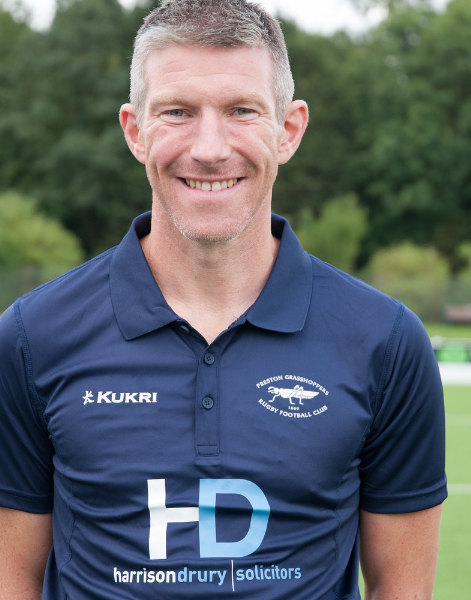
Mark Taylor
Founder and Lead Physiotherapist at Bespoked Physiotherapy (UK)
Mark is a physio in the Ribble Valley at the centre of Great Britain, with a particular interest in rehabilitation and helping people enjoy the outdoors. When the clinic diary allows he can usually be found swimming, cycling and running.
Over many years I have railed against physiotherapy being something that is ‘delivered’ in small, clinical rooms or cubicles – surely to develop the most productive relationship between therapist and patient we need people to feel at ease and ensure they have all the time they need to ‘tell their story’. I personally find that, semi structured subjective assessments over a nice coffee and in a non-clinical space (in normal ‘covid free’ times at least!) give masses of valuable information ranging from training plan error and overload in athletes, to fears and anxieties about exercise in others.
Following initial assessment, I am increasingly utilising ‘outdoor rehab sessions’ for a wide range of clients and presentations to help promote effective assessment, exercise, advice, self-management and engagement with the natural world.
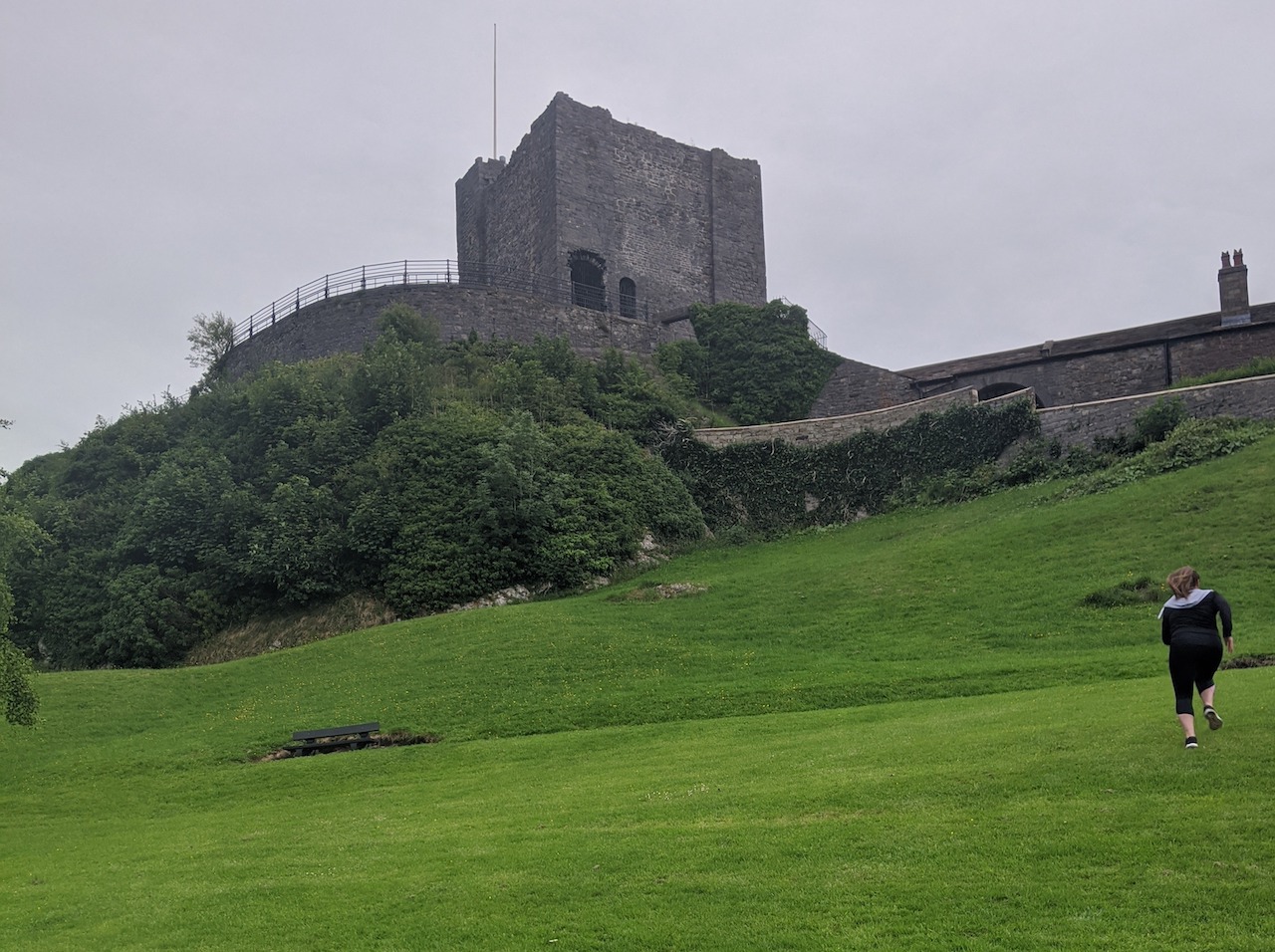
We will only develop as a profession if we continually challenge our beliefs and are willing to adapt how we work, however we should also aim to avoid being ‘gimmicky’ and I feel that as a profession we need to challenge many things including:
– How relevant is our rehabilitation and advice for amateur athletes?
– In what ways can we enhance our input for people with persistent pain or following illness?
– How best can we promote activity and the general wellbeing of our communities?
So, this leads us to the great outdoors and my practice…what type of things am I doing and what benefits, and challenges, do I see, and how might this approach be of increased use post Covid-19? (although of course at the moment sessions do need to be in line with all Covid-19 precautions):
Running sessions
I find that I am increasingly discussing the merits of running slowly, particularly with many keen runners and triathletes presenting with injuries attributable to training plan error or overload.
Ever keen to pore over their smartwatch data after each run many amateur athletes have real difficulties in perceiving ‘easy exercise’ as being beneficial exercise and, even after prolonged discussions on its evidence and benefits have subsequently reported that they find that the advised pace just feels ‘too slow’. I feel that it is perhaps also pertinent that this data is often then publicly viewable on exercise app’s possibly creating a pressure for some to be seen to be ‘performing well’ to others.
I have found that actually going out and running with people allows for wider discussion, practical demonstration of the theories that have been discussed previously and generally much increased acceptance and future application.
These sessions have also highlighted other aspects not picked up in a typical clinic assessment such as differing running styles at different stages of fatigue, breathing patterns and compensatory mechanisms such as favouring one leg when descending steps.
Sessions introducing people to running on trails when they have previously been apprehensive due to a fear of injury have also been rewarding, for both patient and therapist.
The physio obviously needs to be able to run at the required speed for these sessions, is responsible for planning routes and should be prepared to field any number of related and unrelated questions whilst spending a prolonged period of time with a patient in this setting, but this can itself lead to very useful information which can help in management for that individual. In general, these sessions can be invaluable to reinforce advice and improve the load management of athletes.
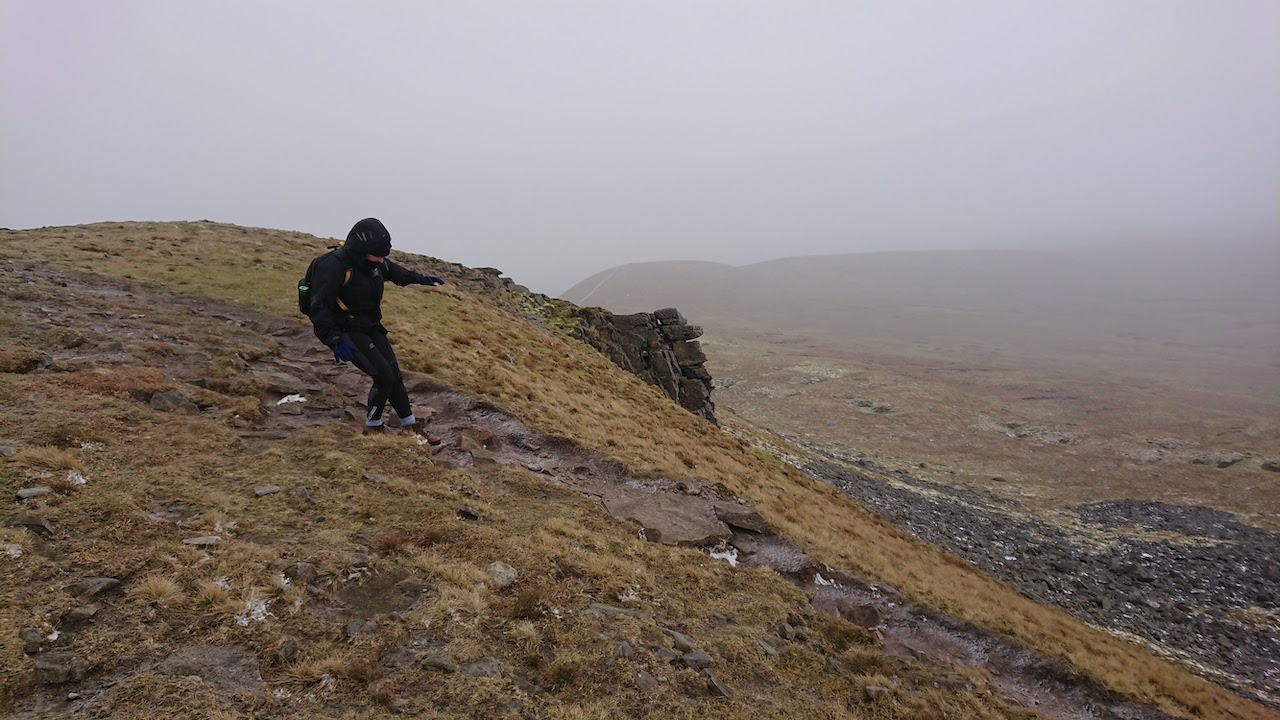
Sport specific rehab
Even the best designed rehabilitation sessions within a clinic or gym setting cannot fully replicate the demands of many sporting activities. When rehabilitating athletes with long term injuries I have found over many years that well thought through ‘sports specific’ drills in a clinic/gym are often not transferred into practice away from the clinic, and on discussion a contributory factor is often a fear of reinjury in a less controlled setting.
Athletes can struggle to find another person to do their rehab drills with, resulting in carry over benefits from sessions being lost. A recent example of this that comes to mind was a female rugby player whose peers were very wary about doing any contact drills for fear of reinjuring their teammate’s knee. I have found that demonstration and teaching of drills in a relevant setting will often give the athlete more confidence in guiding others to help with their rehabilitation, and therefore improve the likelihood of exercises being completed.
Sessions in a relevant outdoor setting can also help with the reintroduction of faster, more extreme and unpredictable movements which aid the physio analyse sports specific movements but also help the athlete build confidence, skill and give them a clearer picture of what they can do independently.
These sessions are generally very well received and give a real ‘light at the end of the tunnel’ for athletes, and can often lead to them suggesting possible drills for future sessions based on the demands of their sport and any positions they may be fearful of being in.
Athletes who whom I have used these outdoor sessions have come from a wide range of sports including skiing, football, rugby, BMX cycling and fell running. I believe that using a suitable location where more sport specific exercises can be conducted can result in increased confidence for the patient and, ultimately, hopefully a more successful return to sport.

Walking and talking
Apart from sport-specific purposes, simply getting out of the clinic and walking with people can have significant benefits. Subjectively it can be surprising how much more people open up when out of the ‘clinical environment’ and I frequently utilise a walk from the clinic to a nearby park for a ‘real world’ walking analysis. A leisurely walk also commonly highlights specific areas of outdoor interest to the patient and for subsequent goals to be agreed upon, issues that may be best addressed by referring onwards to another professional can also be identified.
In my experience, getting out of the clinic with people experiencing persistent pain can have multiple benefits. Functional exercise goals can often be worked on practically outdoors, and anxieties about things such as walking on uneven ground discussed and worked through practically rather than theoretically on a balance mat etc.
Of course the clinic environment is necessary for many parts of our work and a good subjective assessment will highlight many appropriate goals. However, I would also argue that just being outdoors with this important patient group helps us to progress more biopsychosocial approaches, ‘de-medicalises’ care, increases engagement and encourages people to re-engage with exercise and nature.
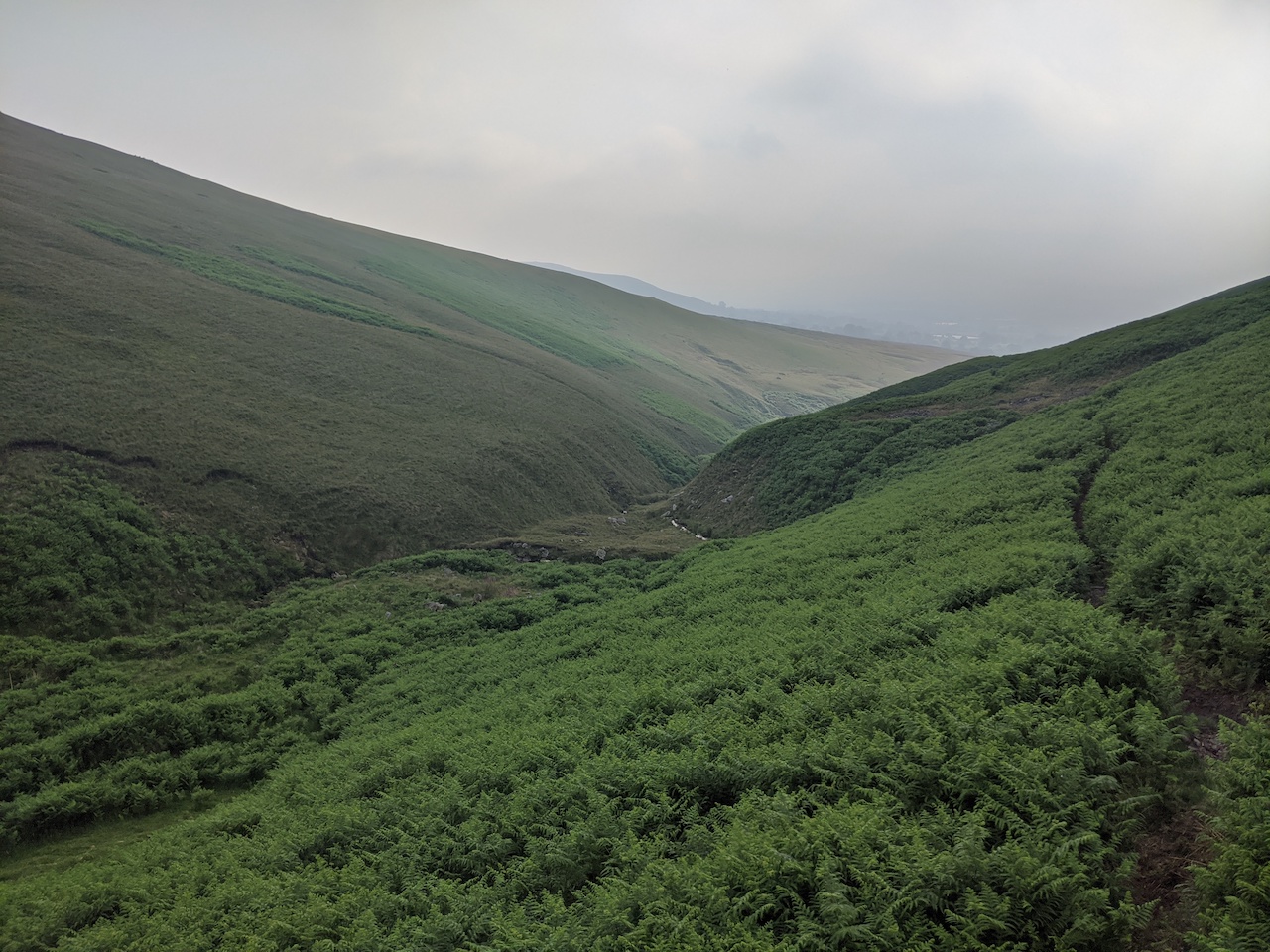
The future ‘Post Covid’ landscape
It is now accepted that many aspects of life are not going to be the same for an indeterminate period of time as a result of the Covid-19 pandemic, and I believe that this may give more reason and opportunity to take some of our therapy outdoors.
Whilst vital to minimise the risk of virus transmission wearing face masks and other protective equipment is undeniably uncomfortable and communication is affected by being unable to read facial expressions etc. I believe that clients and therapists alike will therefore enjoy the chance to get outdoors and benefit from interaction, at an appropriate distance, with some of the protective equipment not needed.
The extent and range of post viral symptoms and complications being experienced by some patients who have had Covid-19 is just becoming apparent, and many people are undoubtedly going to benefit from therapy and guidance aimed at gradually increasing their activity levels, and I forsee that outdoor sessions could be of great use both physically and psychologically in these cases.
Challenges
Without a doubt, challenges to practice and business do exist when we consider any of these outdoor therapy routes, including the need for appropriate risk assessments. This way of working does not lend itself to a crammed diary with a different contact every 30 minutes and so the right balance does need to be made with financial and business needs. Nonetheless, I believe that for myself the benefits certainly outweigh the challenges and I also personally get significant psychological benefits from conducting more of my work outdoors, and clinical satisfaction from feedback and outcomes.
Final words
Hopefully this blogpost gives you a flavour of some approaches that I believe are of real benefit to a wide range of clients…certainly not everybody, but a steadily growing percentage. Above all, I believe that these sessions lead to improved outcomes, better resilience, self-management and increased activity and interaction with our natural environment. Surely, these are desirable goals for our profession and something we should all strive for, even in the perma-drizzle of North West England!
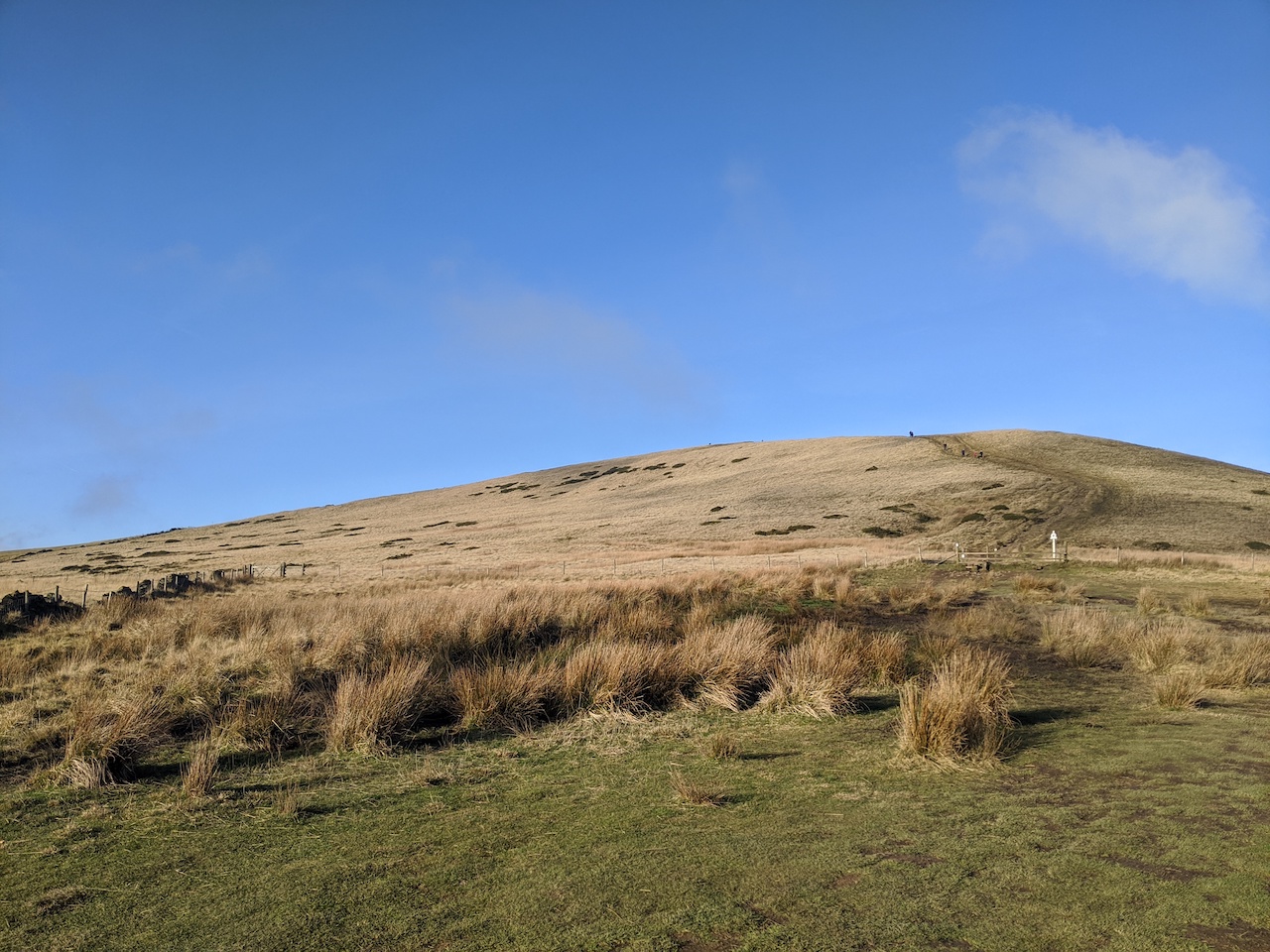

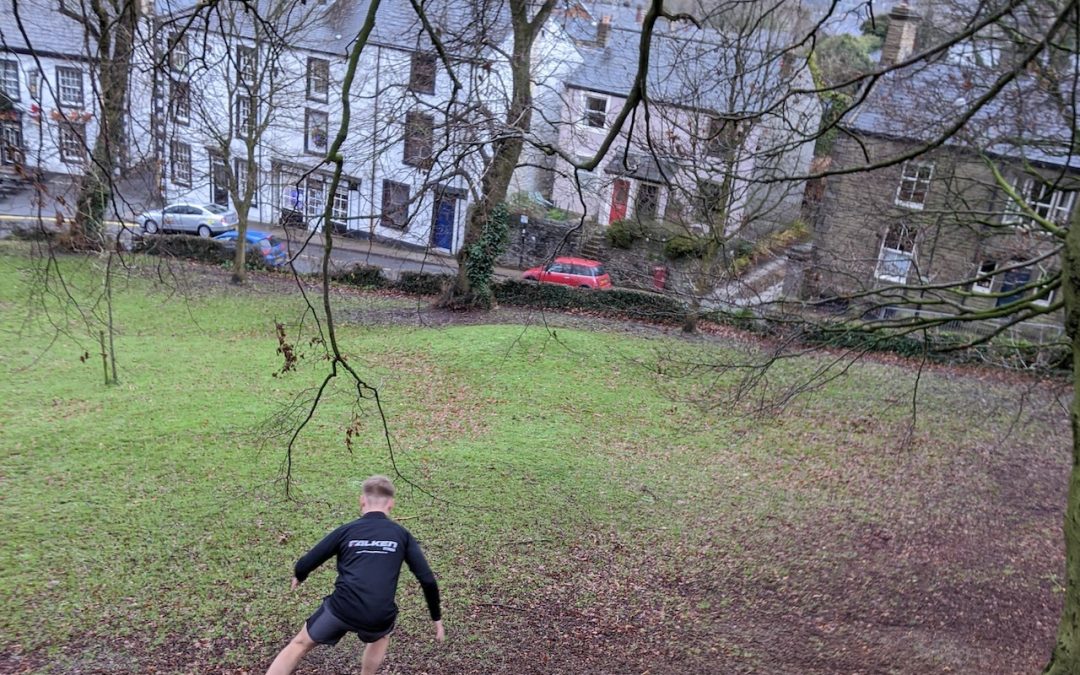
This is a brilliant blog post. It was a joy to read. I absolutely love the idea of outdoor rehab and believe that it holds real value for the right individual.
Thanks Mark, very inspiring read. I like your thoughts on improved outcomes, better resilience, self-management and increased activity and interaction with our natural environment. I live and work in Munich. Have been outdoors with some of my patients myself. It’s always a great experience for both sides I think.